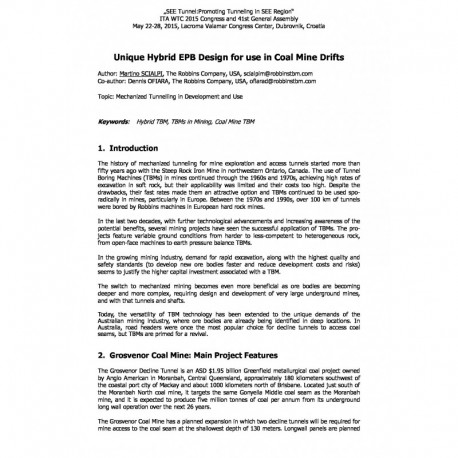Cart
0
0
No document
0,00 €
Total
Document successfully added to your shopping cart
Quantity
Total
There are 0 items in your cart.
There is 1 item in your cart.
Total documents
Total shipping
To be determined
Total
Search & filter
Search for a publication
Search & filter
Viewed documents
Unique Hybrid EPB Design for use in Coal Mine Drifts
wtc2015_scialpi_fullpaper
The history of mechanized tunneling for mine exploration and access tunnels started more than fifty years ago with the Steep Rock Iron Mine in northwestern Ontario, Canada. The use of Tunnel Boring Machines (TBMs) in mines continued through the 1960s and 1970s, achieving high rates of excavation in soft rock, but their applicability was limited and their costs too high. Despite the drawbacks, their fast rates made them an attractive option and TBMs continued to be used spo-radically in mines, particularly in Europe. Between the 1970s and 1990s, over 100 km of tunnels were bored by Robbins machines in European hard rock mines. In the last two decades, with further technological advancements and increasing awareness of the potential benefits, several mining projects have seen the successful application of TBMs. The pro-jects feature variable ground conditions from harder to less-competent to heterogeneous rock, from open-face machines to earth pressure balance TBMs. In the growing mining industry, demand for rapid excavation, along with the highest quality and safety standards (to develop new ore bodies faster and reduce development costs and risks) seems to justify the higher capital investment associated with a TBM. The switch to mechanized mining becomes even more beneficial as ore bodies are becoming deeper and more complex, requiring design and development of very large underground mines, and with that tunnels and shafts. Today, the versatility of TBM technology has been extended to the unique demands of the Australian mining industry, where ore bodies are already being identified in deep locations. In Australia, road headers were once the most popular choice for decline tunnels to access coal seams, but TBMs are primed for a revival.




